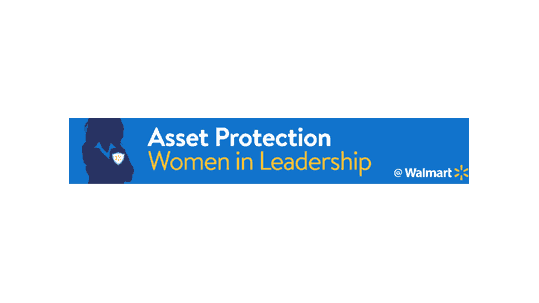Today, Walmart operates over 11,300 retail units under 58 banners in 27 countries and e-commerce websites in ten countries. The company employs approximately 2.2 million associates around the world—1.5 million in the United States alone. In 1969, the company first incorporated as Wal-Mart Stores, Inc. and in 2018 became Walmart Inc.
Give us a snapshot of your department by the numbers.
Walmart is the largest US retailer and has over 4,500 stores in the US. The Asset Protection team supports those stores with over 43,000 associates.
Website: www.walmart.com
What program or strategy has seen unique success for your department?
We have recently launched an initiative aimed at empowering women within asset protection to gain exposure and pursue leadership roles within our organization. Historically, there has been a disparity of women within the leadership ranks of the loss prevention industry. Our aim with this initiative is to bridge that gap by identifying and pulling up our top female talent.
How did the idea or program/strategy originate?
Some time ago, LP Magazine published an article highlighting a survey they had completed with women leaders in the LP industry. We were staggered by some of the statistics presented in the article. For example, 53 percent of women in the retail loss prevention field believe there are times when they’ve missed out on a raise, promotion, or key assignment simply because they are women. When we started discussing those themes, we knew we wanted to continue the work we were doing to recruit and retain diverse talent in a more formalized way. That’s when we started to build out a program specifically supporting our female leadership. We called it AP Women in Leadership (APWIL).
How has your department exceeded the expectations of senior leadership?
We expected there to be an appetite for a structured mentoring program supporting the women in our organization, but the range of the appetite was much broader than we anticipated. We received inquiries and appreciation from AP associates across the organization, and even peaked the interest of other departments within our company.
What were the obstacles?
Conversations around gender inequality are often tough to navigate. The reasons that we typically see more men in LP leadership than women can’t be solved with a spreadsheet or a P&L analysis. It took some real vulnerability from our leadership to reflect and discuss what could be preventing women from advancing within LP as an industry. After that reflection period, it took courage to put our realizations into meaningful actions. We have an outstanding support structure in our executive leadership, and they encouraged our transparency and creativity during every step of the process. That really made the difference with our team and continues to drive engagement in the program.
What are some lessons you’ve learned during this endeavor?
I’ve learned countless lessons while helping to initiate the AP Women in Leadership program. The one that stands out the most to me is that your associates are watching you. Good or bad, they’re making note of your words and actions, and they’re thinking about how you use your voice to impact the culture around you. That also means they’re watching and taking note when you choose not to use your voice. The gravity of that still hits me at times when I second-guess my approach, and it helps me stay more vigilant around being a constant advocate for my team.
What does your department do along those lines that sets you up for future success?
If we want to stay relevant in our changing LP landscape, we need to cultivate and maintain an environment where good talent, male or female, can thrive. The Walmart asset protection department does that in a meaningful way, and it sets us up with a bench strength that is ready to take on whatever the next generation of retail throws our way.
What has been a major struggle lately?
As with any new program or initiative, the challenge will become keeping the content and delivery fresh and relevant, while coordinating events and planning next steps for APWIL. We must be disciplined around keeping the conversation going and continuing to improve the program, while still running our business. Ultimately, it will make our business thrive through a strong and diverse team of AP professionals.
Do you think other retailers are facing this struggle?
Based on the LP Magazine survey, yes. The ratio of women to men within the industry is getting better, but we still have work to do.
What advice would you give?
Don’t just assume things will improve. Cultures and precedents don’t change unless there is a deliberate attempt to adapt. You can’t afford to leave your best talent behind because they don’t fit the norm of what a loss prevention leader used to look like. Our leadership at Walmart has high expectations and constantly challenges us to be better than we were yesterday. This latest development is a great example of what can be achieved when great leaders push their teams towards creative solutions.
*Editor’s Note: LPM’s Profiles in LP highlight various asset protection/loss prevention department programs or strategies that are deemed successful by team members. This profile of Walmart asset protection was submitted by Christyn Keef, divisional asset protection sr. director for Walmart, Inc.
